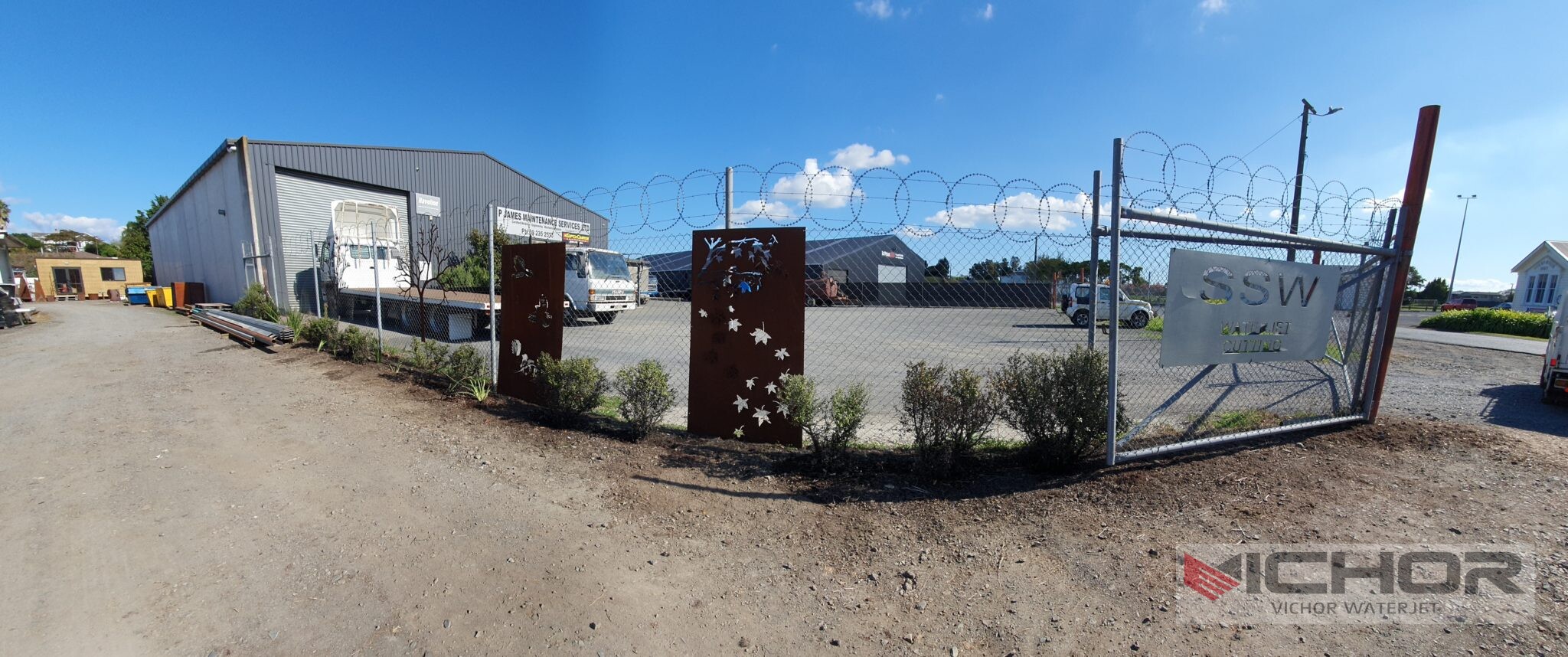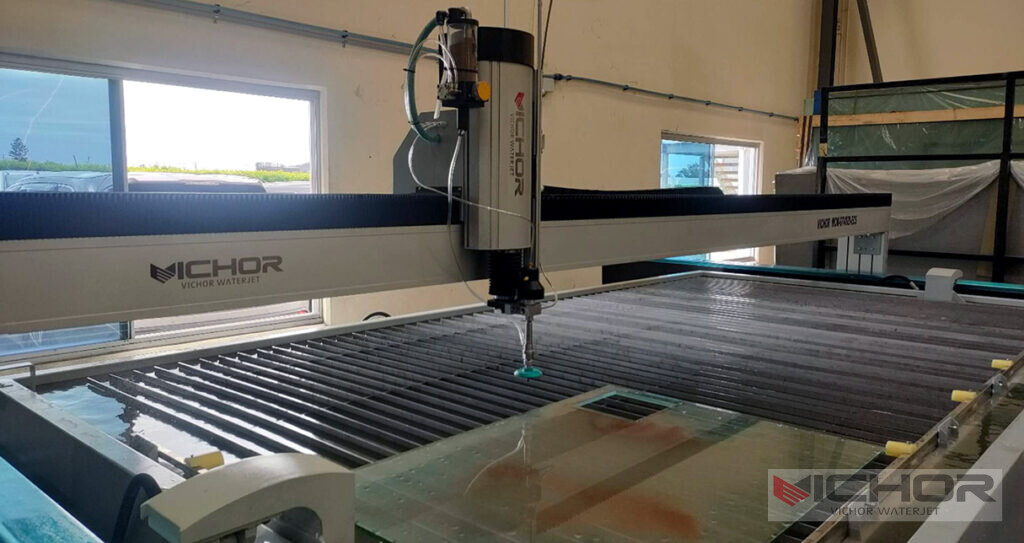
7 Key Advantages of Water Jet Glass Cutting Machines: Precision, Versatility & Efficiency Unveiled
Glass, with its inherent beauty and fragility, demands cutting methods that are both incredibly precise and remarkably gentle. Enter the water jet glass cutting machine – a technological marvel revolutionizing how we shape this challenging material. Combining pure water or an abrasive slurry with immense pressure, these machines deliver unmatched capabilities. This comprehensive guide explores the 7 Key Advantages of Water Jet Glass Cutting Machines, delving deep into why they are the preferred choice for intricate, high-quality glass fabrication across diverse industries.
1. The Core Principle: How a Water Jet Glass Cutting Machine Actually Works
At the heart of every water jet glass cutting machine lies a surprisingly elegant yet powerful principle: harnessing the erosive power of a hyper-accelerated stream. Here’s the breakdown:
Ultra-High Pressure Generation: A powerful intensifier pump pressurizes ordinary water to extreme levels, typically between 60,000 and 90,000 PSI (sometimes even higher). This transforms water into a potent cutting tool.
Nozzle Focus: The pressurized water is forced through a tiny gemstone orifice (often diamond or sapphire), creating a coherent, ultra-thin stream traveling at supersonic speeds (exceeding Mach 3).
Pure vs. Abrasive: For glass cutting, two modes exist:
Pure Water Jet: Used for scoring glass or cutting very thin, delicate glass. The pure stream creates a precise, narrow kerf without thermal stress.
Abrasive Water Jet (AWJ): The predominant method for cutting thicker glass. Finely ground garnet abrasive is introduced into the high-velocity water stream just after the orifice, within a mixing tube. The abrasive particles dramatically accelerate the cutting power through micro-erosion.
The Cutting Action: The abrasive-laden stream strikes the glass surface with immense kinetic energy, eroding a microscopic amount of material with each particle impact. The cutting head, controlled by CNC (Computer Numerical Control), moves precisely along the programmed path, resulting in a smooth, accurate cut.
The water jet glass cutting machine excels because it’s a cold-cutting process. Unlike lasers or plasma, there’s no heat-affected zone (HAZ), preventing thermal stress, cracking, or changes to the glass’s molecular structure – a critical factor for maintaining strength and optical clarity.
2. Unmatched Material Versatility: Beyond Just Standard Glass
One of the most compelling advantages of a water jet glass cutting machine is its extraordinary versatility. While exceptional for glass, it effortlessly handles a vast array of materials, making it an incredibly valuable asset in any fabrication shop:
All Glass Types: From standard float glass and tempered glass to laminated safety glass, borosilicate (Pyrex), stained glass, fused glass, mirrors, and even delicate glass tiles or thick glass blocks. The cold-cutting process ensures structural integrity remains intact.
Composites & Laminates: Easily cuts through complex materials like carbon fiber, fiberglass, and acrylics (Plexiglas) without delamination or melting edges.
Metals: Cuts stainless steel, aluminum, brass, copper, titanium, and tool steel – regardless of hardness or heat treatment.
Stone & Tile: Precisely cuts marble, granite, slate, ceramic, and porcelain tiles.
Plastics & Rubber: Handles everything from soft foams and gaskets to dense engineering plastics like HDPE and UHMW.
Exotic Materials: Capable of cutting materials sensitive to heat or prone to chipping with other methods, including honeycomb structures, Kevlar, and certain electronic components.
This versatility means a single water jet glass cutting machine can replace multiple dedicated cutting systems, streamlining production and reducing equipment costs. Switching between cutting glass and, say, the aluminum frame it mounts into, is often just a matter of changing the cutting program and potentially the abrasive feed rate.
3. Superior Precision and Complex Geometry Capabilities
Precision is paramount in glass fabrication, especially for architectural elements, intricate art, or tight-tolerance industrial components. The water jet glass cutting machine delivers exceptional accuracy:
High Tolerance Cutting: Modern CNC-controlled water jet glass cutting machines routinely achieve tolerances of +/- 0.005 inches (0.127 mm) or better, depending on material thickness and machine calibration. This precision is consistent across the entire cutting bed.
Near-Net-Shape Cutting: Waterjets produce very little kerf (the width of the cut), minimizing material waste. The kerf width is primarily determined by the orifice size and abrasive flow rate, typically ranging from 0.020″ to 0.050″ (0.5mm to 1.27mm) for abrasive cutting glass.
Intricate Detail: The small, focused stream allows for cutting incredibly complex shapes with sharp inside corners and fine details – impossible with saws or scoring wheels. Think ornate patterns, detailed logos, intricate curves, and internal cutouts without pre-drilled starter holes.
Minimal Edge Chipping: Properly tuned, a water jet glass cutting machine produces remarkably clean edges on glass, with minimal chipping or micro-fractures, significantly reducing or eliminating secondary edge finishing requirements.
Taper Compensation: Advanced systems incorporate dynamic head control that automatically adjusts the cutting head angle during motion to compensate for the natural taper (wider at the top, narrower at the bottom) inherent in waterjet cutting, ensuring dimensional accuracy throughout the thickness of the glass.
This level of precision makes the water jet glass cutting machine ideal for custom architectural glazing, complex shower enclosures, artistic glass installations, aerospace components, and high-end furniture.
4. The Critical Advantage: No Heat-Affected Zone (HAZ)
This cannot be overstated: the cold cutting nature of waterjet technology is arguably its single most significant benefit for glass and many other materials. Why is eliminating the HAZ so crucial?
Preserves Material Integrity: Heat from lasers, plasma, or even excessive friction from saws can:
Weaken Glass: Create micro-fractures and stress points, significantly reducing the structural strength and impact resistance of the glass. Tempered glass can even detemper near cut edges.
Cause Cracking: Thermal shock is a major risk, especially with thicker glass or sensitive types like borosilicate.
Alter Properties: Heat can change the optical properties (causing distortion or haze) or the chemical resistance of certain materials.
Eliminates Thermal Distortion: Heat causes materials to warp or distort during cutting. Waterjet cutting produces parts that are dimensionally stable and true straight off the machine.
Safer Edges: Heat-free cutting leaves the natural edge condition of the material. For glass, this means no melted or re-solidified edges that can be exceptionally sharp or brittle.
No Toxic Fumes: Unlike thermal processes, waterjet cutting glass produces no hazardous fumes, smoke, or gases (beyond dust from abrasive garnet, which is captured by the water tank and filtration systems), creating a cleaner and safer work environment.
For applications where structural integrity, optical clarity, and dimensional stability are non-negotiable – such as structural glazing, safety glass, optical components, or chemically resistant glassware – the water jet glass cutting machine is the undisputed champion.
5. Minimal Setup, Reduced Fixturing, and Ease of Operation
Compared to many traditional glass cutting methods, operating a modern water jet glass cutting machine offers significant practical advantages:
Simple Material Fixturing: Because the cutting force is directed downward and localized, glass sheets often require only simple perimeter clamping or can even be held in place by their own weight on the submerged cutting table (“tank”). Vacuum tables are common but not always essential for glass. This contrasts sharply with saws needing robust clamping to prevent vibration-induced breakage.
Reduced Tooling Costs: There are no expensive custom dies, molds, or specialized blades needed for different shapes. Cutting complex geometries requires only a digital CAD file.
Fast Programming & Setup: Modern software is user-friendly. Operators import CAD drawings (DXF, DWG, etc.), generate toolpaths (nest parts for efficiency if needed), set cutting parameters (pressure, speed, abrasive rate), and initiate cutting. Setup time between jobs is minimal.
Automated Operation: Once started, the water jet glass cutting machine runs unattended, following the programmed path precisely. Operators primarily monitor the process and manage material loading/unloading.
Reduced Secondary Operations: The clean, precise cuts often eliminate or drastically reduce the need for grinding, sanding, or polishing edges, especially for decorative edges or when using the “cut-to-polish” technique where the waterjet edge is the final finish.
This ease of setup and operation translates directly into faster turnaround times for prototypes and production runs, lower labor costs per part, and greater flexibility to handle rush jobs or design changes.
6. Environmental and Safety Considerations
While powerful, water jet glass cutting machines are designed with environmental and operator safety in mind:
Water Recycling: The vast majority of systems incorporate closed-loop water recycling. The water used in the cutting process (along with spent abrasive and cut material sludge) collects in the tank. Filtration systems remove solids, and the clean water is recirculated back to the pump. Water consumption is surprisingly low for the cutting power delivered.
Abrasive Garnet: Garnet sand is the most common abrasive. It’s a naturally occurring, non-toxic mineral. While it becomes a waste product mixed with cut material (sludge), it is inert and can often be recycled or disposed of in landfill without special hazardous waste handling. Some systems even offer abrasive reclamation technologies.
Noise Mitigation: High-pressure pumps and the cutting stream itself generate significant noise. Modern machines feature extensive sound-dampening enclosures around the cutting area and pump cabinets to protect operators.
Containment: The cutting process occurs submerged in a water-filled tank, effectively containing the high-energy stream, noise, and splashes. Safety interlocks prevent operation when access doors are open.
Low Fire Risk: The absence of heat sparks or flames makes the water jet glass cutting machine intrinsically safer than thermal cutting methods, particularly important when cutting near flammable materials or in environments with dust hazards.
7. Key Applications: Where Water Jet Glass Cutting Machines Shine
The unique capabilities of the water jet glass cutting machine make it indispensable across numerous sectors:
Architectural & Interior Glass: Complex facades, curved balcony panels, intricate partitions, decorative panels, signage, custom shower doors & enclosures, skylights, stair treads, and bespoke furniture components.
Automotive & Transportation: Windshields (prototyping/pre-cut), side windows, sunroofs, headlight/taillight lenses (prototypes), interior trim components, and aerospace glazing.
Art & Sculpture: Creating intricate glass art, detailed sculptures, fused glass components, and custom installations requiring unique shapes.
Electronics & Displays: Cutting cover glass for displays, touchscreens, control panels, and optical components requiring absolute precision and no thermal damage.
Industrial & Safety Glass: Cutting thick laminated safety glass for banks, vehicles, or machinery guards, sight glasses for tanks and vessels, and specialized glass for scientific or industrial equipment.
Furniture & Décor: Tabletops, shelves, backsplashes, intricate mirror designs, and decorative glass elements.
Prototyping: Rapidly producing complex glass prototypes for design verification without expensive tooling.
Choosing the Right Water Jet Glass Cutting Machine
Investing in a water jet glass cutting machine requires careful consideration:
Cutting Bed Size: Dictates the maximum sheet size you can process.
Pump Pressure & Horsepower: Higher pressure allows faster cutting of thicker materials and generally improves edge quality. 60K-90K PSI is standard for glass/stone/metal.
CNC Control & Software: Look for robust, user-friendly software with features like nesting, taper compensation, and good CAD/CAM compatibility.
Dynamic Head Control (DHC/X/Y Tilt): Essential for high-precision cutting and minimizing taper, especially on thicker materials.
Abrasive Delivery System: Consistent, reliable abrasive feed is critical for cut quality and speed.
Cutting Table Type: Slat tables (common), vacuum tables, or specialty fixtures. Consider material handling ease.
Manufacturer Reputation & Support: Service, parts availability, and training are vital.
The water jet glass cutting machine represents a paradigm shift in precision fabrication. Its ability to cut intricate shapes in glass and countless other materials with unmatched precision, absolutely no heat damage, and remarkable versatility makes it an invaluable tool for modern manufacturing, architecture, and art. From complex architectural masterpieces to delicate electronic components, the cold, focused power of waterjet technology delivers results that are simply unattainable by other methods. As technology advances, with improvements in pump efficiency, cutting speed, automation, and software intelligence, the dominance and accessibility of the water jet glass cutting machine are only set to increase, solidifying its place as the go-to solution for high-quality, complex cutting challenges. Whether you’re fabricating a single piece of custom art or high-volume architectural components, investing in this technology unlocks a world of creative and manufacturing possibilities.
continue reading
Related Posts
- 1371 words6.9 min read
- 1449 words7.3 min read




